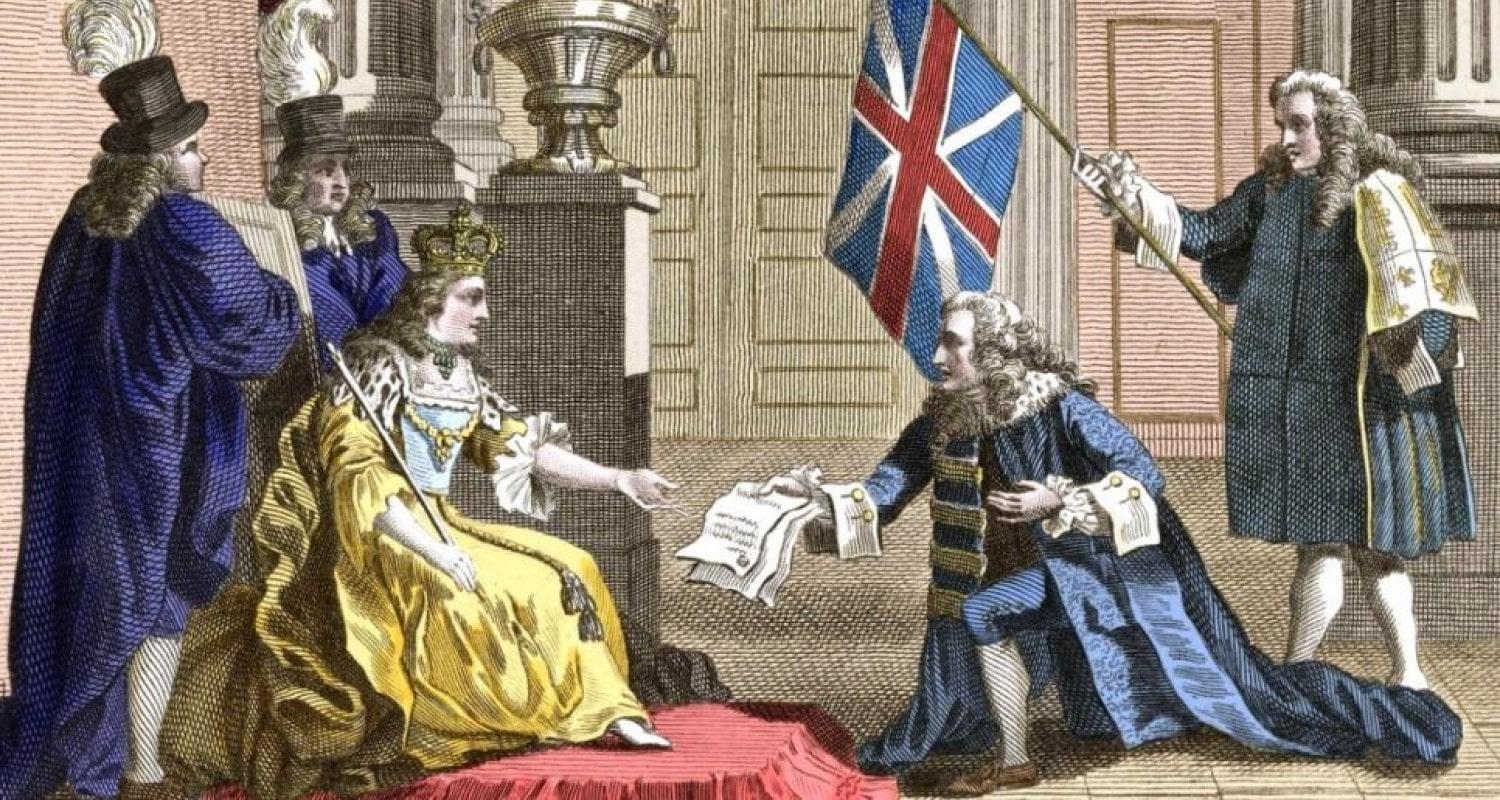On March 25 1707, in Parliament Hall, the Lord Chancellor, the Earl of Seafield formally confirmed the passing of the Act of Union and closed the Scottish Parliament with the words ‘Now there’s ane end of ane auld sang’. Outside the Bells of St Giles tolled the popular tune ‘Why should I feel so sad on my wedding day?’ After three months of heated debate, the Scottish Parliament, ‘The Three Estates’, had voted by 110 votes to 67 to end Scotland’s independence.
It is often claimed that Scotland was on its knees with a begging bowl, desperate for a Union with prosperous England. This illustrated talk will consider the background to the mounting crisis between Scotland and England, a crisis that could easily have slipped into hostilities. It is clear from the evidence that popular opinion in Scotland was opposed to the terms agreed after negotiations between commissioners appointed by both countries. A total of 96 petitions were submitted to the Scottish Parliament during the months of debate; not one supported the proposed Union. So, what were the immediate consequences of the Union? There was though clearly a major casualty and that was the City of Edinburgh.
Eric Melvin is our speaker. Eric graduated with First Class Honours in History and Political Thought from Edinburgh University in 1967. He qualified as a secondary teacher of History and Modern Studies at the then Moray House College of Education gaining a Dip. Ed. in the process and the Staff Prize. Eric later gained an M.Ed. from the University of Edinburgh. He retired from teaching in 2005, working latterly for the City of Edinburgh Council as Headteacher at Currie Community High School. Eric has had several books published on various aspects of Edinburgh’s rich history including books for young readers.
Edinburgh is 900 Years Old!
In 1124 King David I introduced a new system of local government into Scotland by creating royal burghs as part of his efforts to reform the nation’s economic and political structures.
Edinburgh was one of his first royal burghs, along with Berwick, Dunfermline, Roxburgh and Stirling.
While there is no surviving founding Edinburgh charter, an 1127 Dunfermline Abbey royal charter refers to ‘my burgh of Edinburgh’. In 1128, Canongate Burgh was created for Holyrood Abbey.
After the Reformation, Edinburgh spent considerable effort acquiring the former abbey’s lands over the following 200 years. It acquired Canongate then created a new burgh for South Leith in 1636. The burghs of Broughton, Calton and Portsburgh were also acquired and run by Edinburgh. This complex system of governance was abolished in 1856 when all burghs under the management of Edinburgh were merged into a single burgh.
In 1833, Portobello and Leith were made independent parliamentary burghs under the Burgh Reform Act. They ran their own affairs until amalgamated into an expanded Edinburgh in 1896 and 1920, respectively. 1975 saw the last expansion of the city’s boundaries, including Queensferry, which had been made a royal burgh in 1636.
Edinburgh has selected 2024 to mark the start of the 900th anniversary of our city, and to tell the story of Edinburgh’s journey through the centuries from the 12th century City of David right up to the 21st century, the City of Diversity. Our talks at the City Art Centre will celebrate the 10 themes and will span a period of summer 2024 until August 2025.
Edinburgh and the Act of Union 1707
